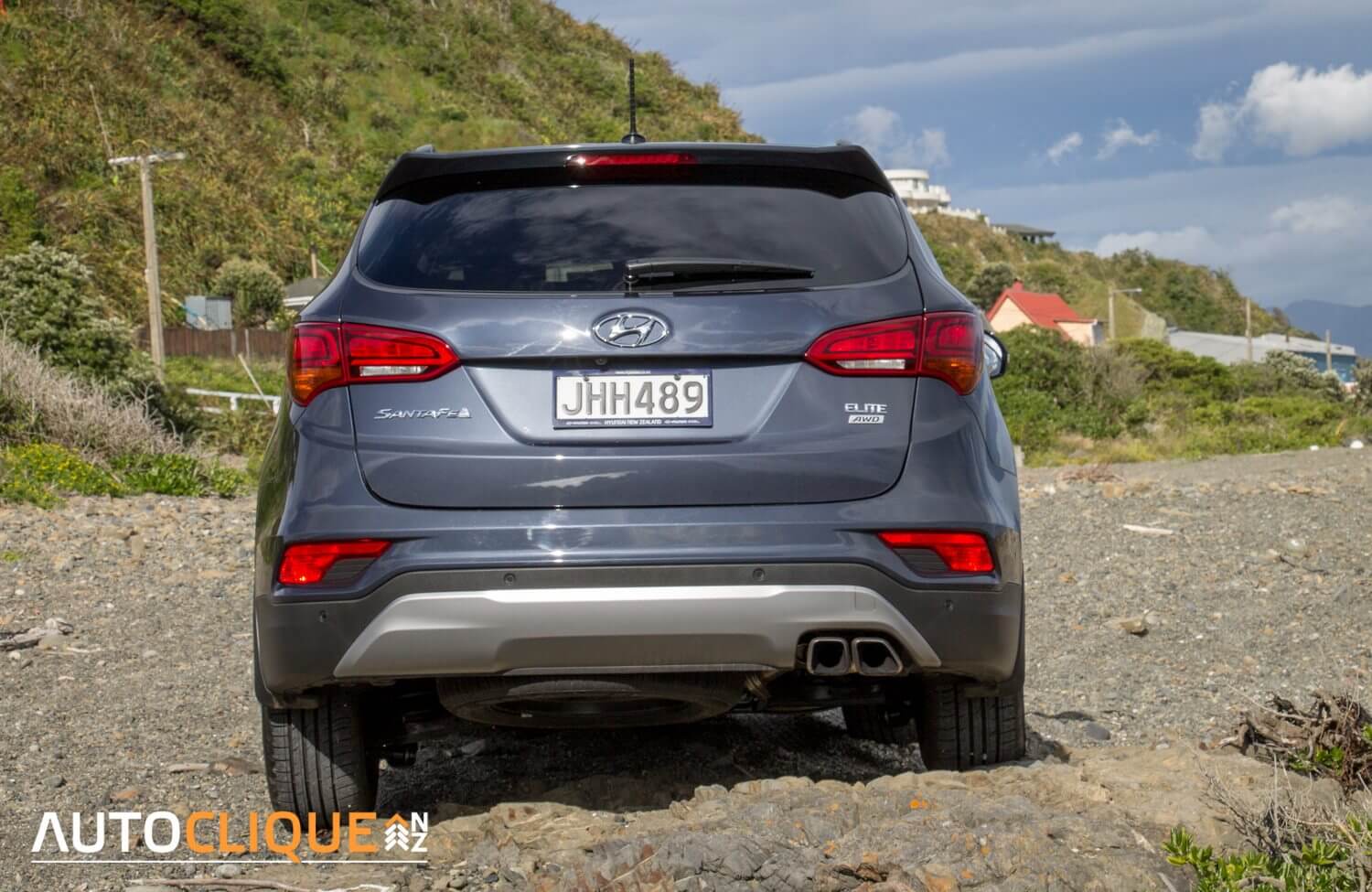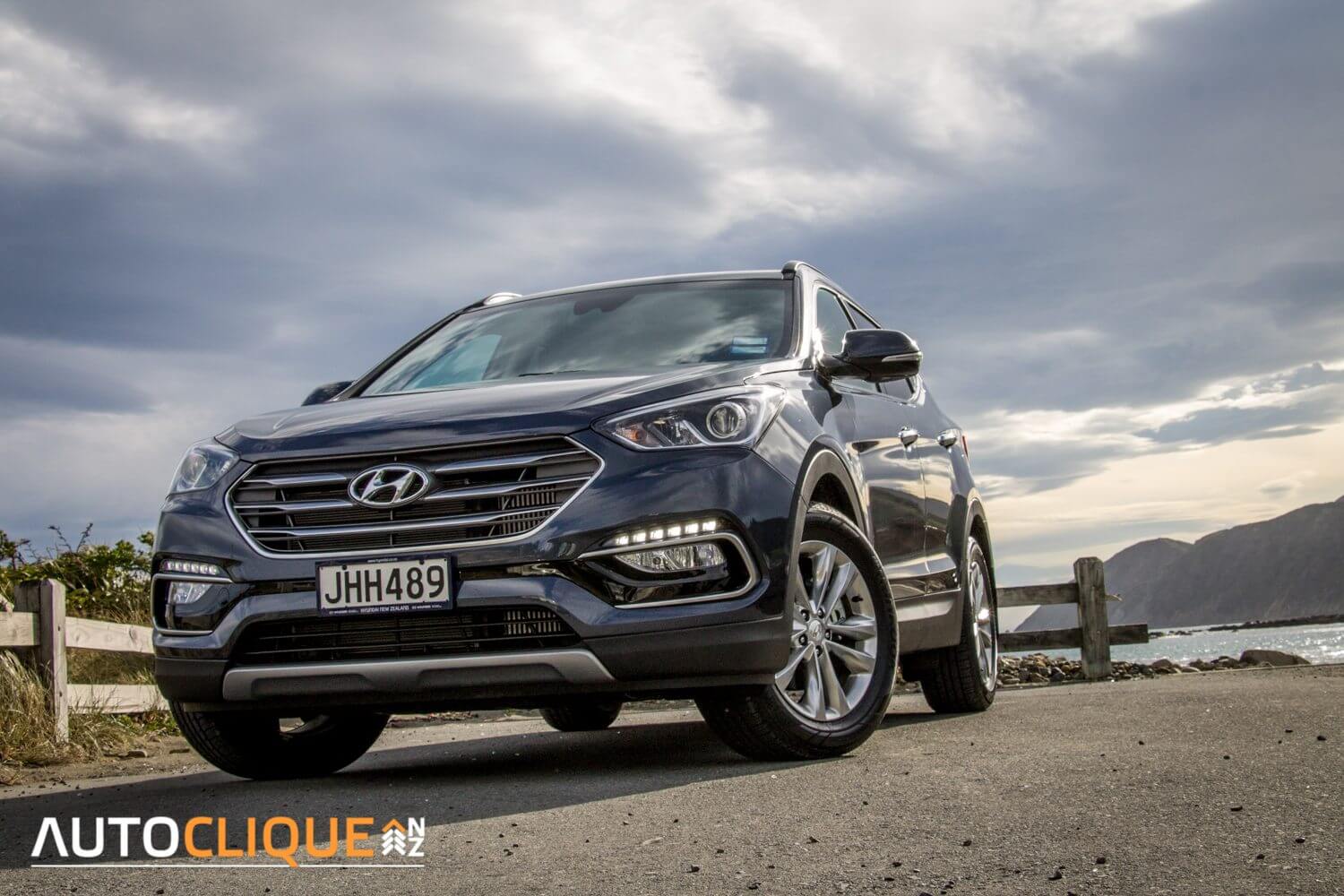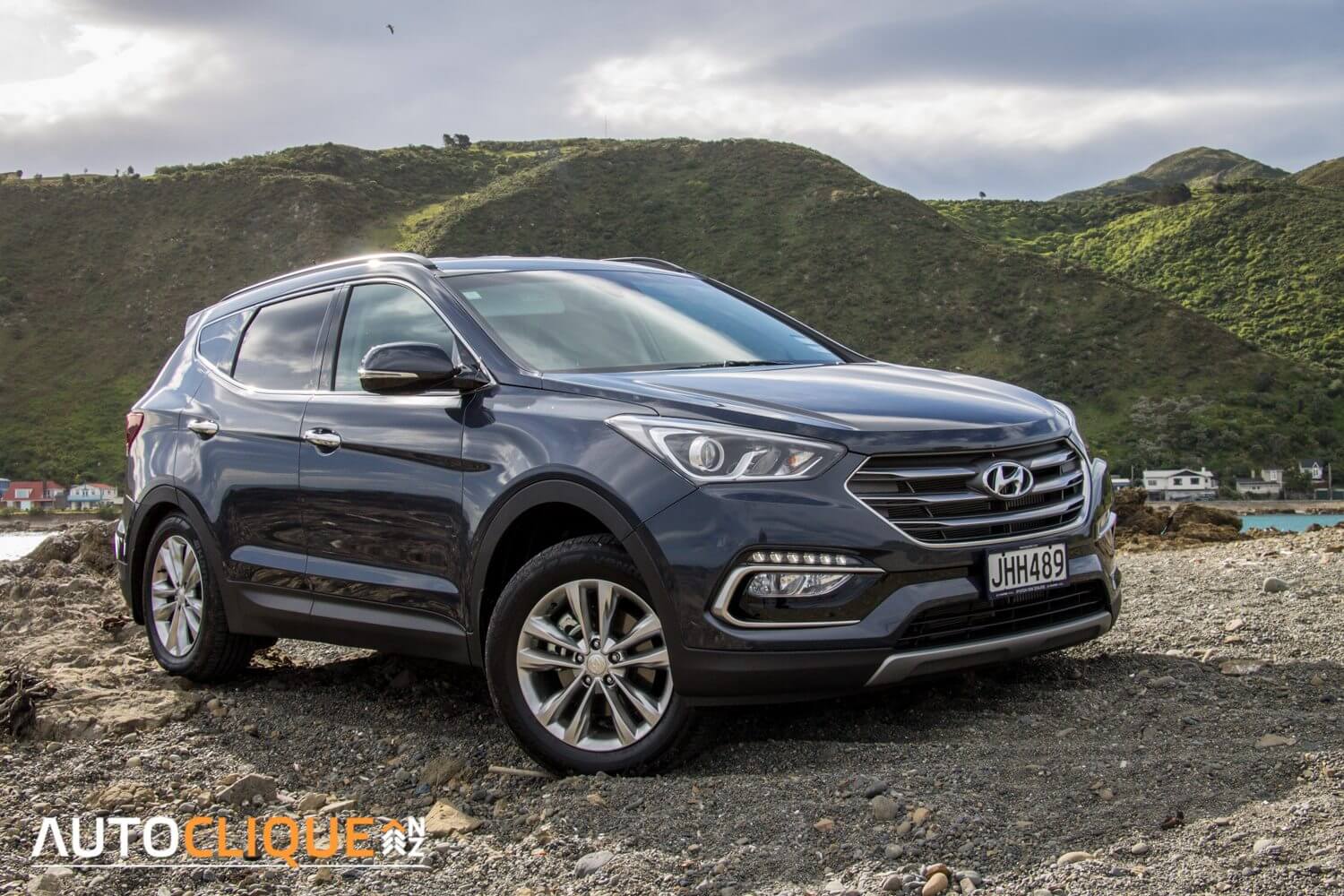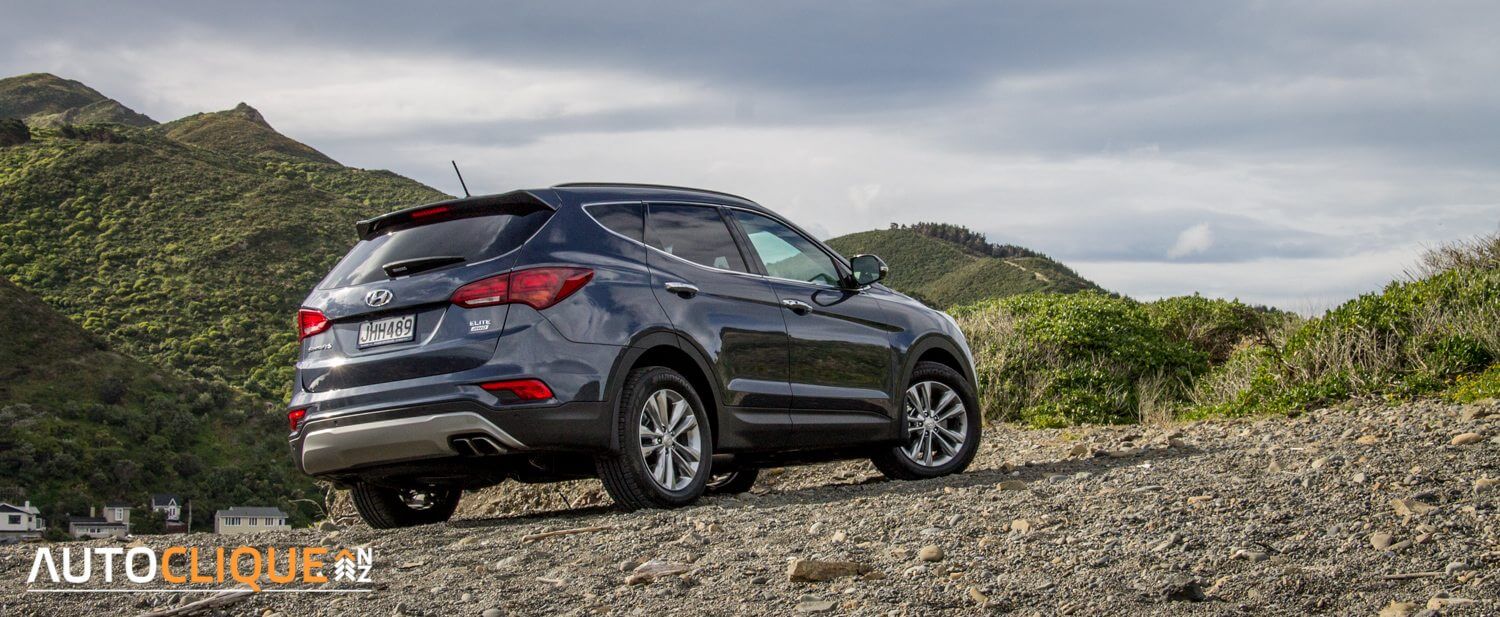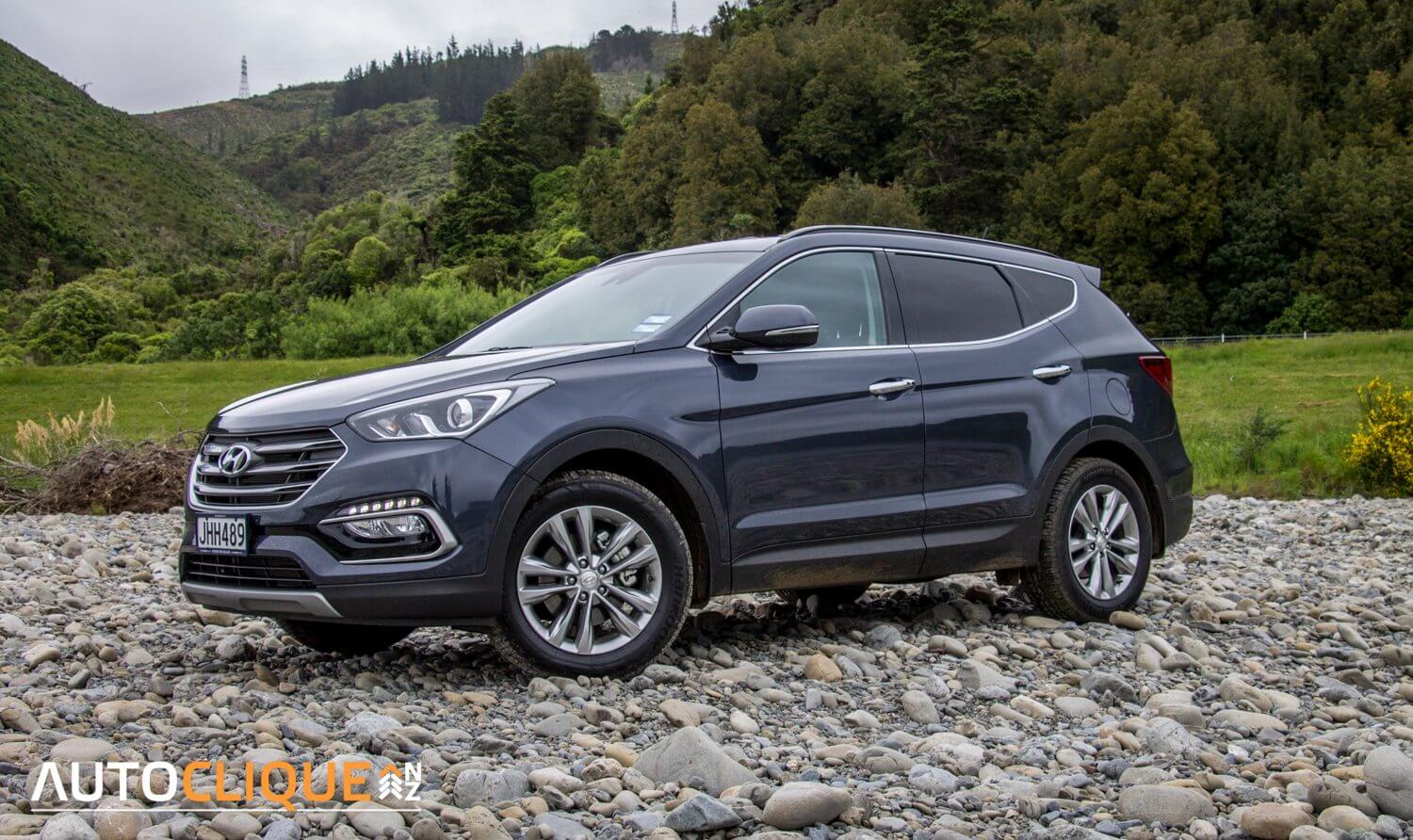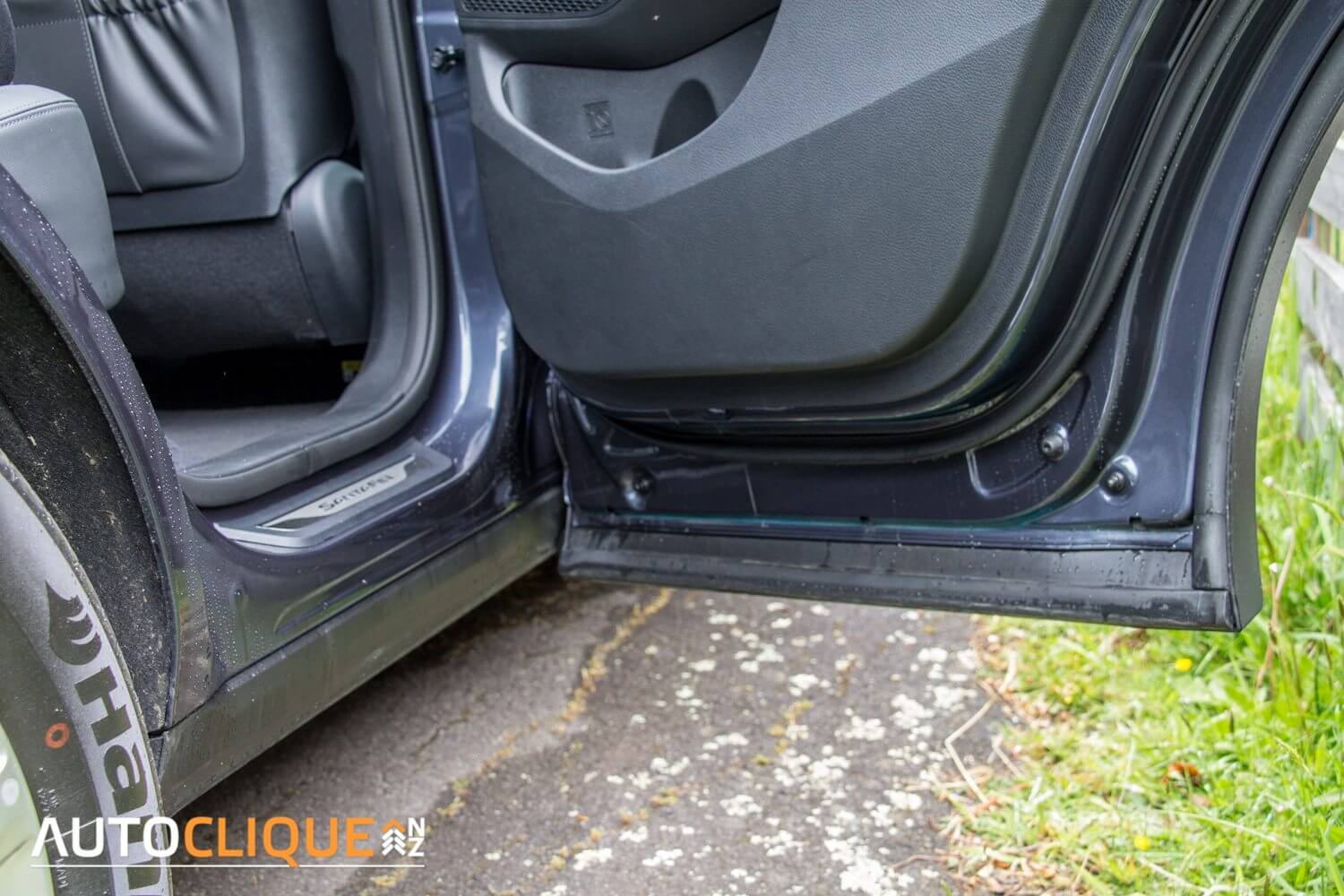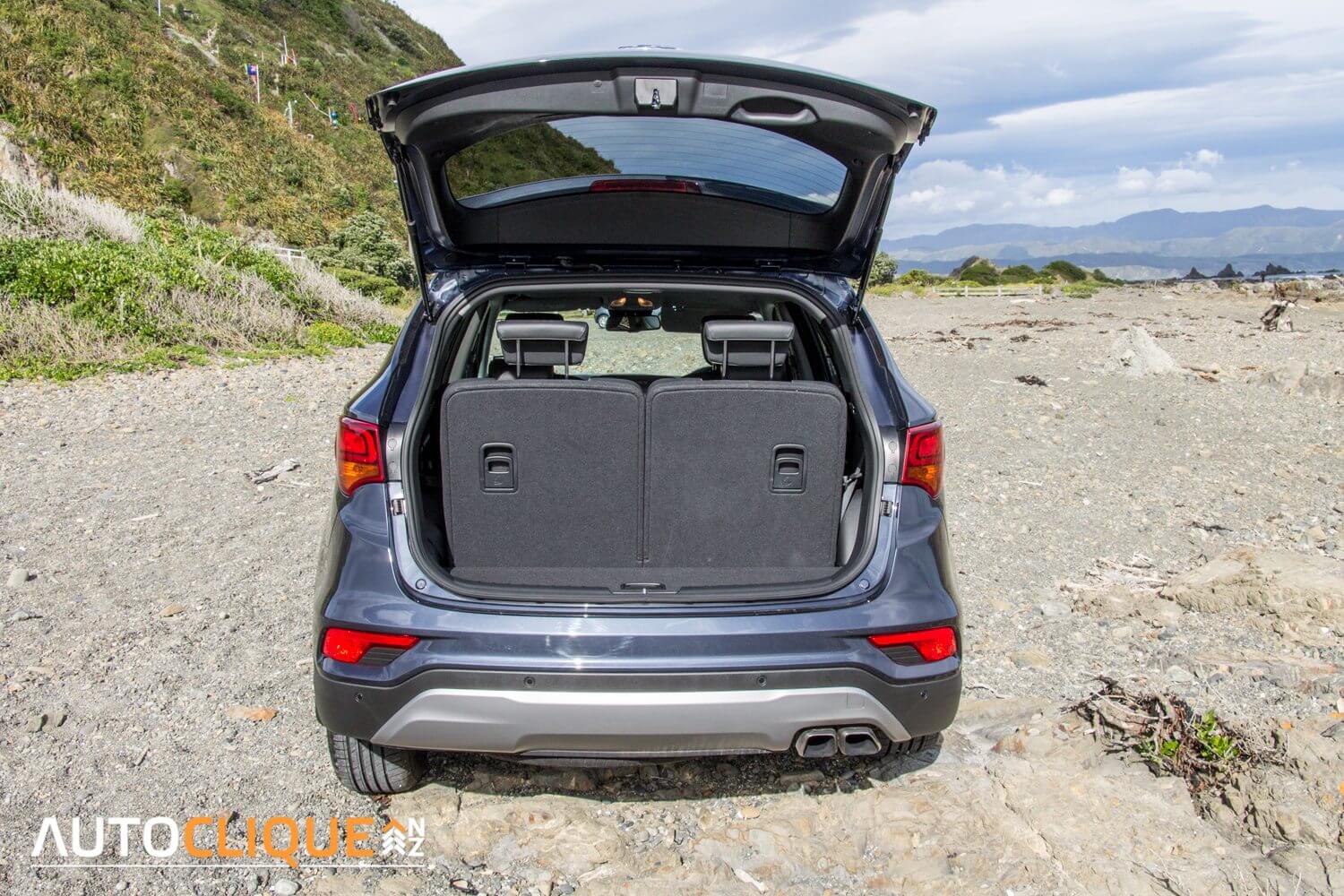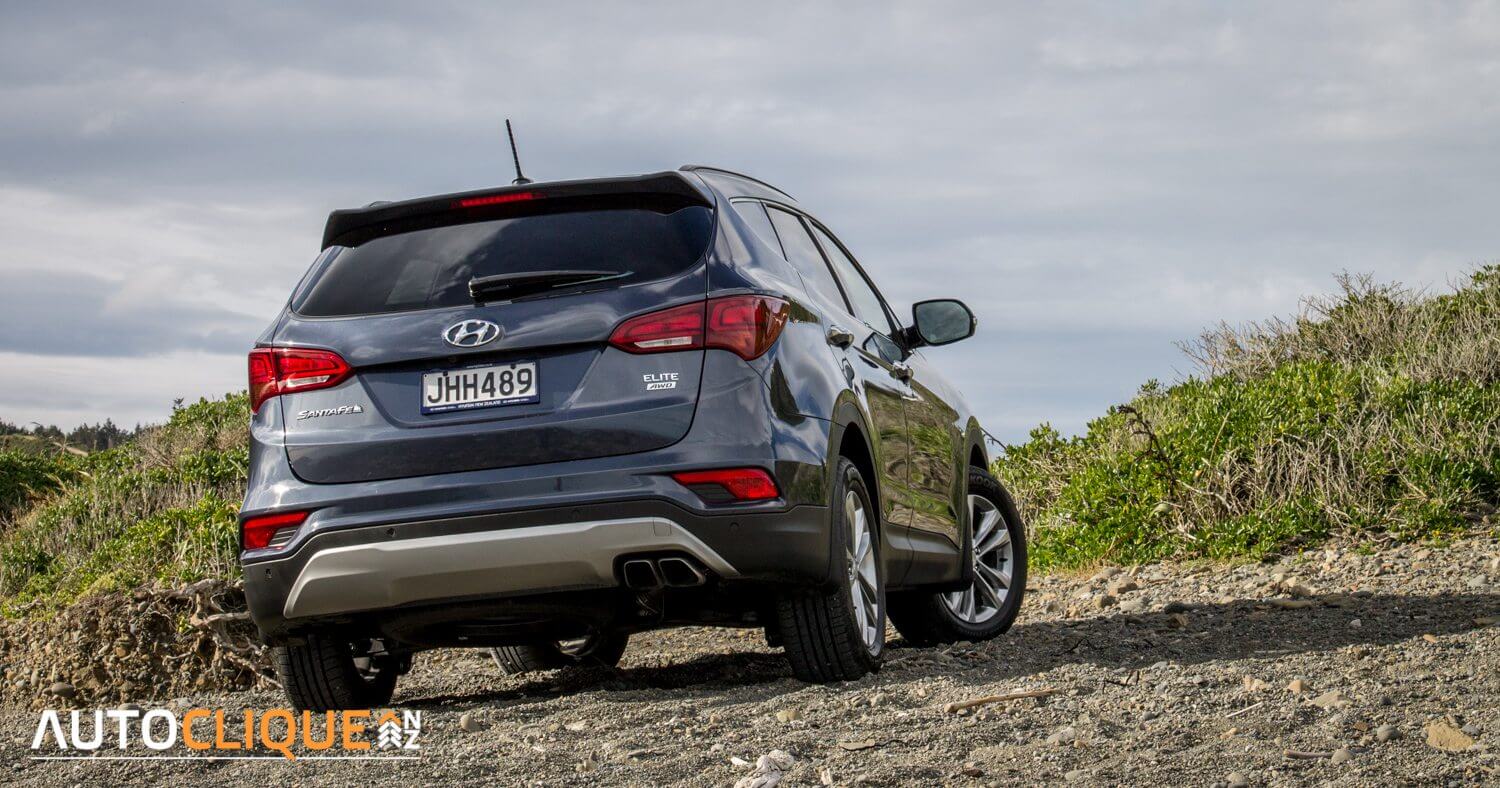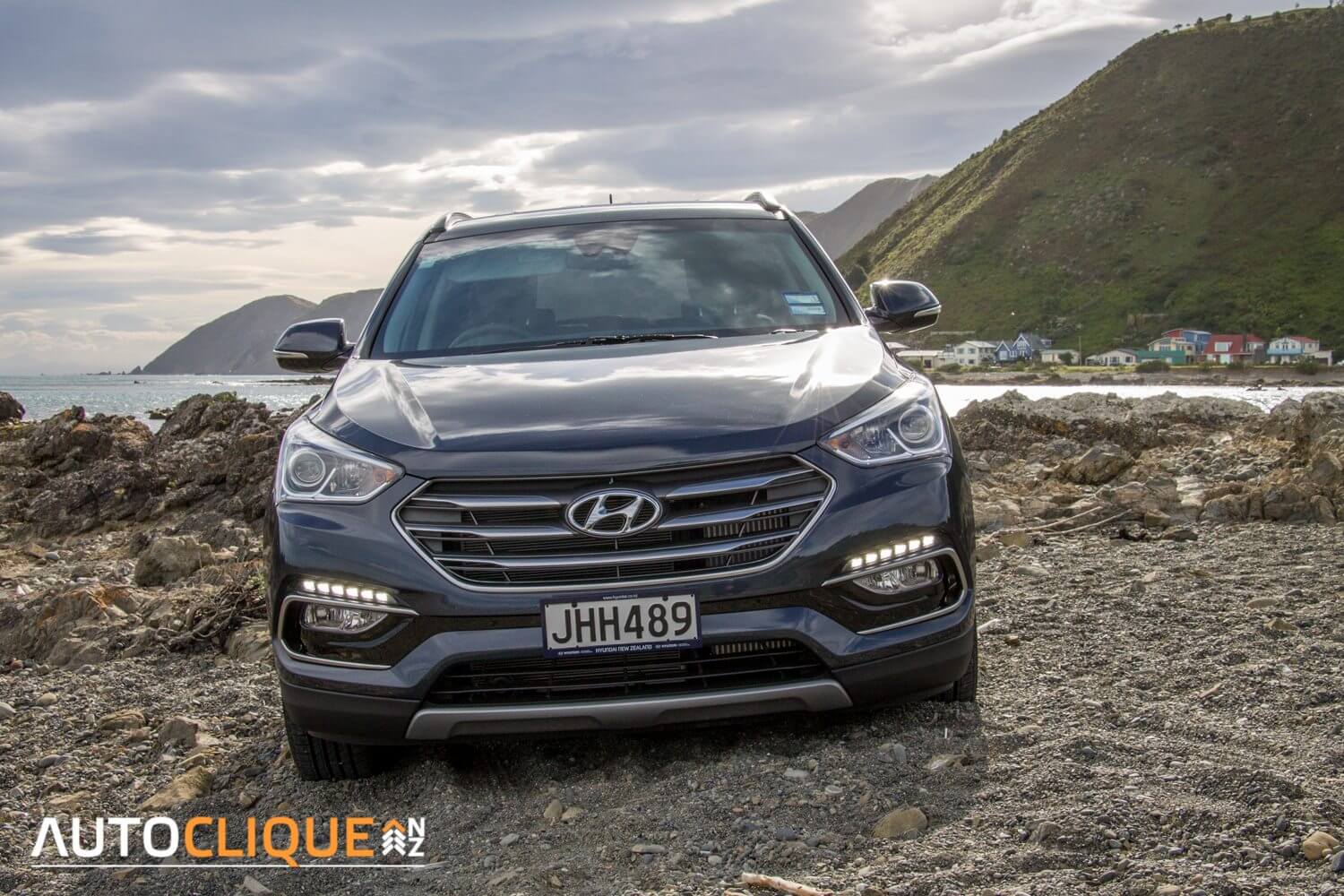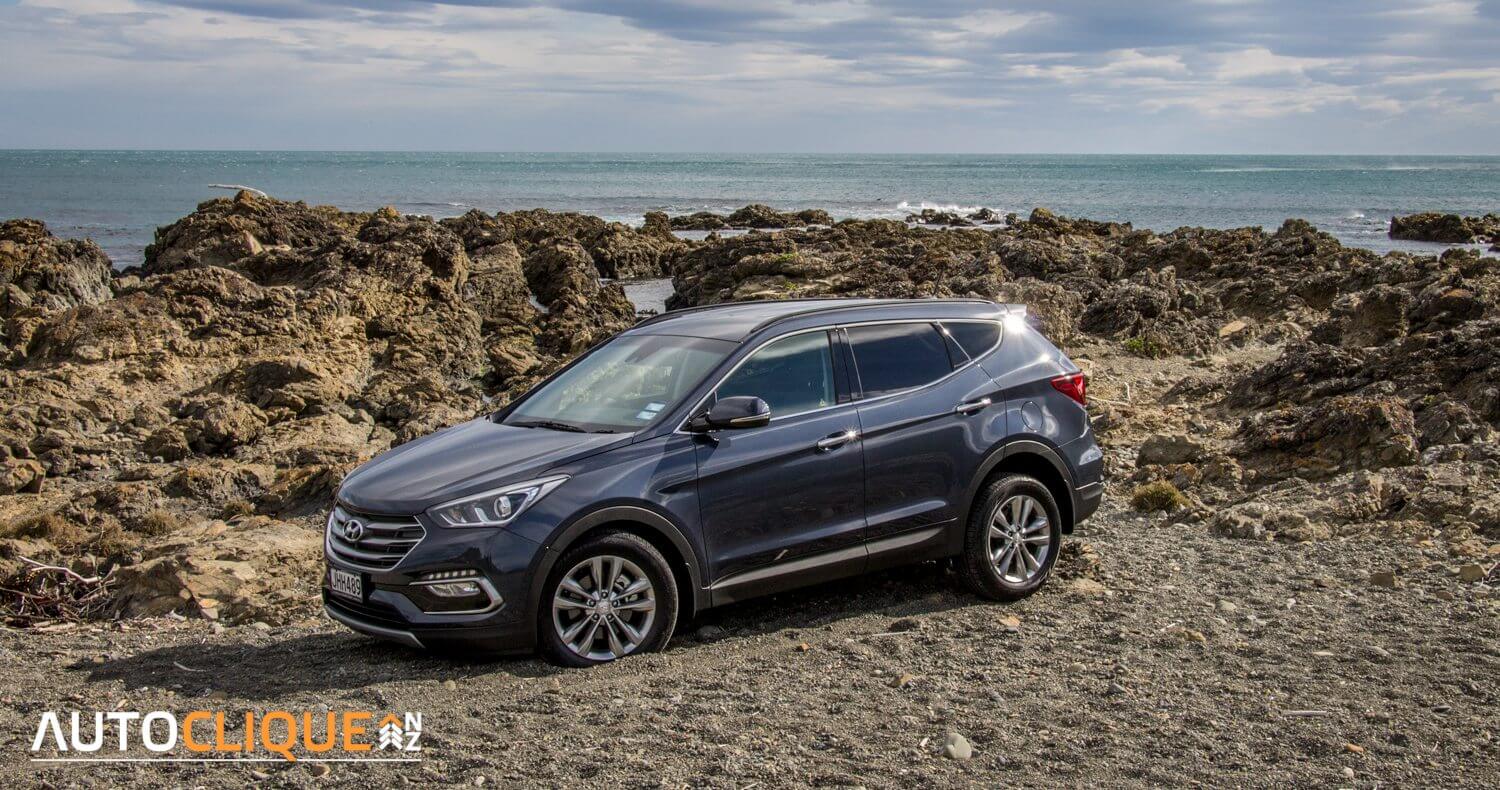Sport Utility Vehicles, SUVs, are the biggest market in the world at the moment for car sales. All of the manufacturers have been busy bringing out whole ranges of different sized SUVs, and until recently I’ve always wondered why. It’s just a taller, uglier car, right? Surely you don’t need all the extra height, you’re just driving a bigger, heavier vehicle than you need to, and that higher centre of gravity must ruin the handling. Then recently I drove the BMW X1 and, to my surprise, I really liked it. So when the new Santa Fe II came up for review I was intrigued to see what Hyundai’s car would be like.
This is the third generation Santa Fe, first available in 2012 and now facelifted and called the Series II. This one is far the best looking Santa Fe so far, in my opinion. It has a purposeful look to it, with the angled front lights and swooping side window profile. I like the squared-off tailpipes, and the front light design with separate LED running lights that don’t look like an afterthought. It’s a good looking car with some nice details. Chunky enough without overdoing it.
There are eight different models available in New Zealand – a standard spec with either five or seven seats, and the higher Elite and Elite Limited specs with seven seats only. Engines are either a 2.4 litre 138kW petrol, 3.3 litre V6 Petrol with 199kW, or a 2.2 litre 147kW common rail diesel. Interestingly the more powerful petrol is 2WD only, all the others are 4WD with a torque-on-demand diff which uses 2WD most of the time to save fuel, engaging 4WD when needed. There’s a button to lock the centre diff for 50/50 torque split if needed.
Our test car was the seven seat diesel Elite spec which costs an extra $10,500 over the base diesel. There are quite a few differences between trim levels, but some of the major ones Elite spec gets above the base are: leather seats, 18” rather than 17” wheels, automatic dual zone climate control, lane departure warning, auto wipers, windshield de-icer, keyless ignition, electric folding mirrors, satnav, two extra speakers plus a sub and amp, electric/heated front seats, heated rear seats, a nicer instrument cluster and electronic parking brake.
Elite Limited adds 19” wheels, self-levelling suspension, blind spot detection and brake assist, smart cruise control, lane change assist, xenon lights, and one of my favourite things – a panoramic sunroof. This is another $6,500 on top, pushing the price over $80k which puts it in a price bracket with plenty of alternative options.
First Impressions
The first thing I noticed when opening the door of the Santa Fe was that it’s quiet inside. Stepping from the echoey showroom into the car and shutting the door (with a pleasingly solid thunk) was almost like putting on noise cancelling headphones. The interior feels well put together, with good quality plastics, leather on the bits you touch, silver highlights, and even some bits of carbon fibre trim. It all works well together and is a thoroughly pleasant place to be. The leather seats are comfortable, with the fronts electrically adjustable. The driver’s seat has lumbar support and adjusts for height, and the steering wheel adjusts manually for height and reach. The steering wheel is just fat enough, with shaped gips, and it’s trimmed in soft-feeling leather.
In the centre there are two power sockets, plus USB and Aux stereo inputs. There’s also Bluetooth for phone and music streaming. The heater and aircon controls are nice, big, well laid-out buttons, and above them is a large touch screen for satnav, stereo and reversing camera display.
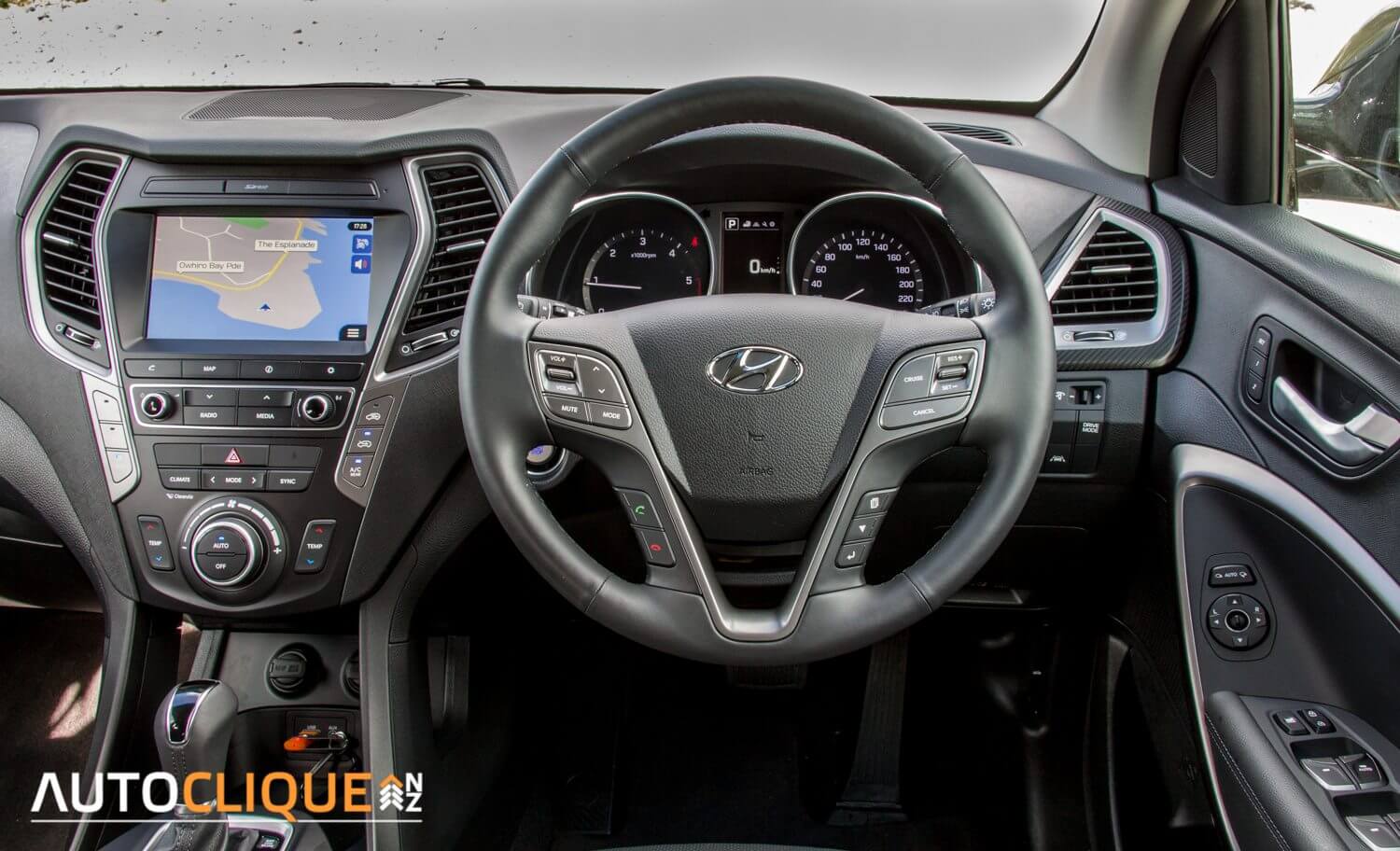
The instruments are clear and simple, with a large rev counter and speedo either side of a colour LCD multi-function display, which I kept as a digital speedo most of the time.
When you get into the car and sit in the driver’s seat, it does a curious thing – the seat moves up to the last position it was in, the instruments light up and the car plays a little startup tune. The word “Welcome” flashes up on the display. Like a PC. It does the same in reverse when turning off the car. Maybe it’s a Korean thing, like our Samsung washer that plays a song when it finishes.
Hit the engine start button – and the 2.2 litre diesel roars into life. Outside the car it’s quite loud, when cold at least, but inside it’s damped down to a pleasing growl. The first time I pulled out onto the road I was surprised at how nippy the car felt. Give it a bit of throttle and it leaps forward with a lot more enthusiasm than I would expect from a nearly 2 ton diesel SUV. On the road, and on the motorway it’s really comfortable, and I may have mentioned this, but it’s also pretty quiet. Minimal wind noise from those huge mirrors, and not much tyre noise either.
What’s it like to live with?
When you walk up to the Santa Fe with the key in your pocket, it senses you and unfolds the wing mirrors, turning on the puddle lights and the lights in the door handles. Pressing the button in the handle unlocks the car. I like this function, it feels friendly somehow, though after a few days I turned it into a challenge to try and sneak up on it without it noticing.
The Santa Fe passed the school run test with honours – the high suspension made it easy to stand outside and make sure my five year-old was strapped in safely. There are ISOFIX mounts as well as hooks for child seat tethers. She didn’t have any problems climbing in or out either as the doors open wide for easy access.
A nice feature is that the bottom of the doors are lower than the sill level, so even if you’ve been off road the inner sill stays clean. The second row seats have great leg room too, and they’re comfortable, reclinable, and even have two stage seat heaters.The fronts have three stage heaters, and even the steering wheel is heated. I can imagine that would be very welcome if you take the car on a ski trip. The second row seats slide backwards and forwards, are split 40/20/40 and can easily be dropped flat using a lever in the side of the boot. Hyundai have really thought about making this car as practical as possible.
The two third row seats fold flat when not in use, and are easily lifted into place. They’re pretty comfortable too, though I suspect adults wouldn’t enjoy a long journey in them. But for shorter trips you could fit seven adults in this car. The side windows right at the back are quite small, so kids won’t be able to see much out of the sides. With the third row seats up there’s still a little bit of room for luggage, but not a lot. As an adult, getting into the rear seats can be a bit of an acrobatic manoeuvre, but kids seem to have no problem getting in.
There’s a little cubby at the back containing tools and a fire extinguisher. The full-sized spare wheel is hidden away underneath the car, which also eats into the height of the load area but is good to have. There are air conditioning vents in the B pillars for the second row, and in the sides of the boot, too, so everyone has fresh air.
So what’s it like to drive? Pretty damn good actually. I had promised my daughter a trip to Staglands, one of our favourite places, and a good test for any car. The trip entails a stretch of motorway, followed by 17km of tight, twisty roads, usually with scary oncoming traffic and fallen rocks to avoid. Not to mention the potential perils of a car sick child.
On the motorway the Santa Fe is happy to cruise along, it’s a relaxed drive and would be no problem on long trips. The cruise control is easily set using simple buttons on the steering wheel. The cruise is fine but I have a couple of issues with it – the main one being that it doesn’t use the display to tell you the set speed, there’s just set and resume buttons plus up and down controls for the speed. It would have been nice to be able to see the set speed and adjust it in increments like a lot of other cars do.
On the motorway another thing became apparent – the foot rest for the driver’s left foot isn’t very tall and I found it uncomfortable to use. Not a biggie but it would be nice to have something bigger.
Once we were off the main highway and onto the twisty bits, the high suspension made itself useful as I was able to drive over a couple of fallen rocks which would have taken out my own car. (I stopped and moved them out of the road). The height also added visibility which helped on some of the corners, though occasionally the fat A-pillar got in the way. The Santa Fe handles well, too. There is some body roll but not that much, and the cornering is good, with decent steering feedback. I did notice a fraction of a second’s delay when accelerating out of corners, then remembered to turn on Sport mode and that sorted it out nicely. There’s also an Eco mode which softens the throttle and changes up sooner. The twisty road seemed to be dealt with in record time in the big Hyundai, and we rolled into Staglands in the pouring rain with no sign of car sickness from my daughter. Bonus points scored for the Santa Fe
On the way I’d noticed a nifty feature of the satnav – as you’re driving along it tells you the numbers of the houses at either side of you. That could be really useful. There’s also a button on the auto dimming rear-view mirror which superimposes a compass direction in the corner.
On the way home we thoroughly tested out the stereo. It has eight speakers plus a separate sub in the side of the boot, and it’s very good indeed. Clear, right up to very high volumes with really good bass.
On the return journey we ventured onto some gravel in the Santa Fe, and tested out the four wheel drive a little. There was no drama at all: I could feel individual wheels slipping and the car sorting it out, but it just cruised along as if we were still on the road. Reassuring, even though I suspect these cars won’t go off road that often, it’s a nice thing to have.
What it’s up against
| Brand / Model | Engine | Power | Fuel L/100km | 0-100km/h | Price Highest to Lowest |
| Toyota Highlander Limited 7 seat | 3.5l 6 cyl petrol | 201kW/337Nm | 10.6 | $77,990 | |
| Toyota Landcuiser Prado 7 seat | 3.0l 4 cyl turbodiesel | 127kW/410Nm | 8.5 | $77,545 | |
| Mitsubishi Pajero 7 seat | 3.2l 4 cyl turbodiesel | 150kW/448Nm | 9.2 | $77,090 | |
| Ford Everest 7 seat | 3.2l 5 cyl turbodiesel | 143kW/470Nm | 8.5 | $75,990 | |
| Hyundai Santa Fe II Elite | 2.2l 4 cyl turbodiesel | 147W/440Nm | 7.7 | 10.1s | $75,490 |
| Kia Sorento R 7 seat | 2.2l 4 cyl turbodiesel | 147kW/441Nm | 7.8 | 9.6s | $70,990 |
| Ford Territory Titanium 7 seat | 2.7l 6 cyl turbodiesel | 140kW/440Nm | 7.3 | $69,990 | |
| Nissan Pathfinder 7 seat | 3.5l 4 cylinder petrol | 190kW/325Nm | 10.2 | $65,990 | |
| Isuzu MU-X 7 seat | 3.0l 4 cyl turbodiesel | 130kW/380Nm | 8.3 | $65,990 | |
| Mazda Limited+ CX-9 7 seat | 3.7l 6 cyl petrol | 204kW/267Nm | 11.3 | $65,490 | |
The good and the bad.
| Pros | Cons |
|
|
What do we think?
So how was my week with the Hyundai Santa Fe II? As I said above, I didn’t think there was much point to having such a big car when a normal sedan or wagon would do the same job. But now I get why people buy these cars. Good visibility, interior space, luxury. There’s a lot of competition in this price range so it would pay to shop around and compare the alternatives, but this is a great choice as a family car. It’s good to drive, well built, even good looking. I’d certainly recommend it.
Rating – Chevron rating 4 out of 5
